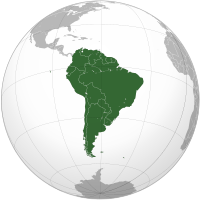
Photo from wikipedia
Abstract The estuarine crab Cyrtograpsus angulatus is an important burrower found in intertidal muddy and rocky shores along the modern coasts of northern Patagonia to southern Brazil on the Atlantic… Click to show full abstract
Abstract The estuarine crab Cyrtograpsus angulatus is an important burrower found in intertidal muddy and rocky shores along the modern coasts of northern Patagonia to southern Brazil on the Atlantic side and from Chile to Peru on the Pacific side. This species is commonly associated with populations of the crab Neohelice granulata in modern sites, with variable impacts of their interactions in the environment. When they become agonistic, the latter species always wins the battle for space and burrows. The previous fossil record of crabs from the mid-Holocene of Buenos Aires was restricted to Neohelice granulata, with no mention of any fossil exoskeletal elements of C. angulatus along its distribution. Herein i describe the first unambiguous fossils of C. angulatus, comprising six almost complete to isolated specimens from the mid-Holocene of Buenos Aires, Pereyra Iraola Park, taphonomic and paleoenvironmental implications of the bispecific assemblage are discussed.
Journal Title: Journal of South American Earth Sciences
Year Published: 2020
Link to full text (if available)
Share on Social Media: Sign Up to like & get
recommendations!